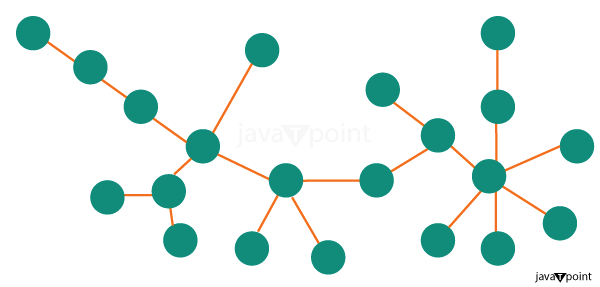Free Tree in Data StructuresA Free Tree is a concept in records systems that refers to a tree facts structure where no precise node is precise as the root. In other words, a free tree is an undirected tree in which any node may be considered the root. It is likewise referred to as an unrooted tree. 
Applications of Free TreesFree trees are a fundamental concept in computer science and are used in various fields, including graph theory, network design, and phylogenetics. In graph theory, free trees are used to study and model multiple problems. They can be used to model and design efficient network paths. In biology, free trees study evolutionary relationships, where the root can be any species under study. Algorithms used in Free TreesSeveral algorithms can be applied to free trees, including: Minimum Spanning Tree (MST) The idea of a Minimum Spanning Tree (MST) is relevant to weighted graphs. A graph is a set of nodes (or vertices) and edges. The graph is known as a weighted graph if these edges have weights (that can constitute distances, expenses, etc.). A spanning tree of a graph is a tree that spans all the vertices of the graph. A tree with the minimum total edge weight is called a Minimum Spanning Tree among all possible spanning trees. Shortest Path In the context of unfastened bushes, on account of the fact that any node may be taken into consideration as the basis, the shortest course between two nodes might remain the same regardless of which node you pick as the foundation. This is because the shortest route is concerned with the total weight of the route, not the character paths from the root to every node. However, it's critical to note that at the same time, as every tree is a graph, each graph is no longer a tree. The idea of the shortest course is extra widely applicable to graphs, even as loose timber is a specific graph. Centroid Decomposition In a tree, a centroid is a node whose removal splits the tree into a set of subtrees such that no subtree has more nodes than the original tree divided by two. The Centroid Decomposition algorithm works as follows:
The Centroid Decomposition produces a centroid tree. Each node represents a subtree centroid. Free trees are a type of data structure used in various real-world examples:
These examples illustrate the versatility of free trees and their wide-ranging applications in various fields of computer science. Free Trees in Graph TheoryIn graph theory, a tree is an undirected graph in which any two vertices are connected by exactly one path. This means that there are no cycles in the tree, and the tree is connected, meaning there's a path from any node to any other node. A free tree is a tree that is not rooted. In other words, it's a tree with no node singled out for special treatment. This means that any node in the tree can be considered as the root. Free trees are sometimes also known as unrooted trees. In a free tree, there is exactly one path between any two nodes. This makes free trees a useful tool in various fields, including computer science and network design, where they can be used to model hierarchical relationships without a fixed root. One of the key properties of free trees, like all trees, is that they have exactly n-1 edges if they have n nodes. This is because adding any edge to a tree creates a cycle, and removing any edge from a tree disconnects it. In terms of their structure, free trees can take many forms. They can be balanced or unbalanced, they can be sparse (with few edges) or dense (with many edges), and they can have a wide range of sizes and shapes.
Next TopicHow to insert Strings into an AVL Tree
|
 For Videos Join Our Youtube Channel: Join Now
For Videos Join Our Youtube Channel: Join Now
Feedback
- Send your Feedback to [email protected]
Help Others, Please Share










